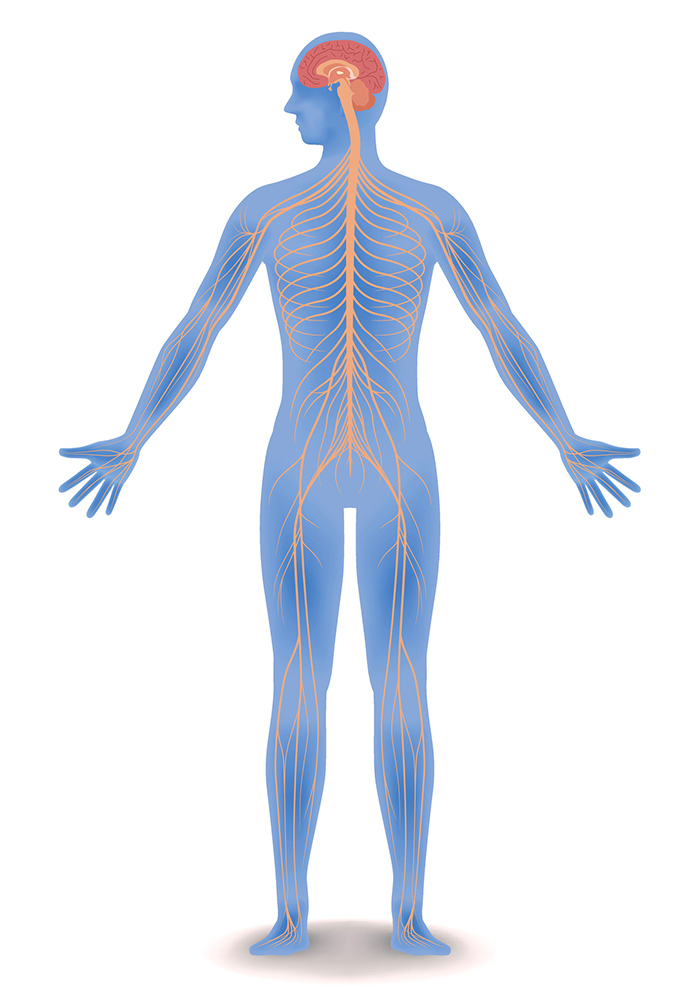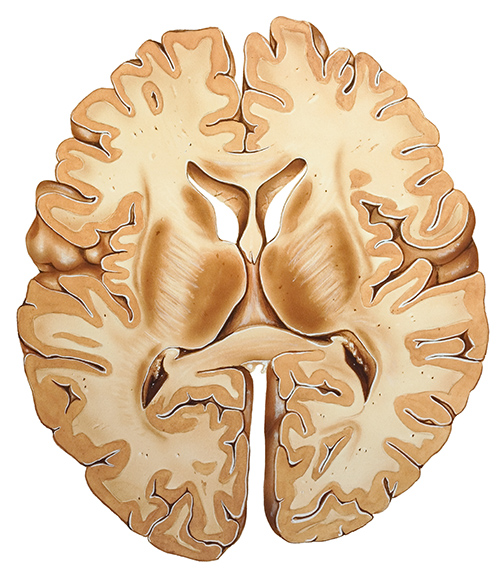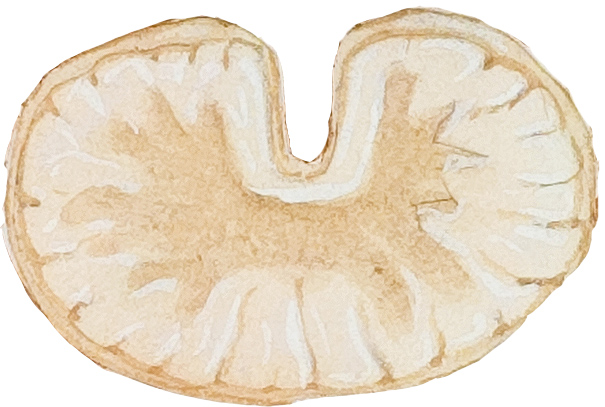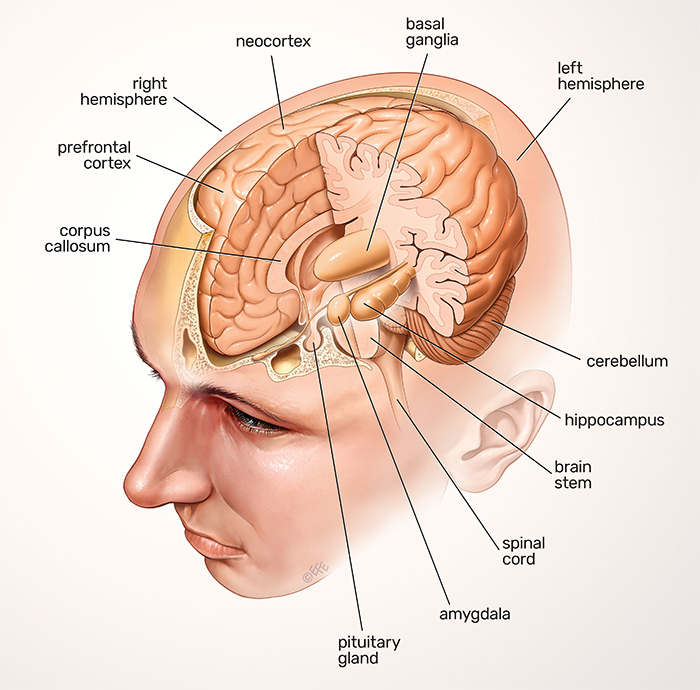Central Nervous System: brain and spinal cord
 Our bodies couldn’t operate without the nervous system - the complex network that coordinates our actions, reflexes, and sensations. Broadly speaking, the nervous system is organised into two main parts, the central nervous system (CNS) and the peripheral nervous system (PNS).
Our bodies couldn’t operate without the nervous system - the complex network that coordinates our actions, reflexes, and sensations. Broadly speaking, the nervous system is organised into two main parts, the central nervous system (CNS) and the peripheral nervous system (PNS).
The CNS is the processing centre of the body and consists of the brain and the spinal cord. Both of these are protected by three layers of membranes known as meninges. For further protection, the brain is encased within the hard bones of the skull, while the spinal cord is protected with the bony vertebrae of our backbones. A third form of protection is cerebrospinal fluid, which provides a buffer that limits impact between the brain and skull or between spinal cord and vertebrae.
Grey and white matter
In terms of tissue, the CNS is divided into grey matter and white matter. Grey matter comprises neuron cell bodies and their dendrites, glial cells, and capillaries. Because of the abundant blood supply of this tissue, it’s actually more pink-coloured than grey.
In the brain, grey matter is mainly found in the outer layers, while in the spinal cord it forms the core ‘butterfly’ shape.


White matter refers to the areas of the CNS which host the majority of axons, the long cords that extend from neurons. Most axons are coated in myelin - a white, fatty insulating cover that helps nerve signals travel quickly and reliably. In the brain, white matter is buried under the grey surface, carrying signals across different parts of the brain. In the spinal cord, white matter is the external layer surrounding the grey core.
The brain

Image: QBI/Levent Efe
If the CNS is the processing centre of the human body, the brain is its headquarters. It is broadly organised into three main regions - the forebrain, the midbrain, and the hindbrain. The largest of these three is the forebrain (derived from the prosencephalon in the developing brain). It contains the large outermost layer of the brain, the wrinkly cerebral cortex, and smaller structures towards its centre, such as the thalamus, hypothalamus, and the pineal gland.
The midbrain (derived from the mesencephalon in the developing brain) serves as the vital connection point between the forebrain and the hindbrain. It’s the top part of the brainstem, which connects the brain to the spinal cord.
The hindbrain (derived from the rhombencephalon in the developing brain) is the lowest back portion of the brain, containing the rest of the brainstem made up of medulla oblongata and the pons, and also the cerebellum - a small ball of dense brain tissue nestled right against the back of the brainstem.
Parts of the brain
The brain’s cerebral cortex is the outermost layer that gives the brain its characteristic wrinkly appearance. The cerebral cortex is divided lengthways into two cerebral hemispheres, each of which traditionally have been divided into four lobes: frontal, parietal, temporal and occipital. Read more.
